I’ve just had a brush with some of my ancestors, and the experience has left me quaking in my sneakers.
OK, that may be a bit of an exaggeration. I wasn’t exactly frightened…more stirred up, the way somebody on a turbulent ride might get. The questions I had before the meet-up have been partly answered, but now I have many more, plus a few contradictions that aren’t easily put to rest, as the ancestors themselves lie silent.
Hearing that I wanted to peer back in time to find out about our family’s religious heritage, my cousin Alice suggested a trip to Nantucket—after Labor Day, of course. There were still lots of prosperous looking people strolling around, many with toddlers in tow, apparently arriving to attend a variety of weddings (but, mid-week?) on the island.
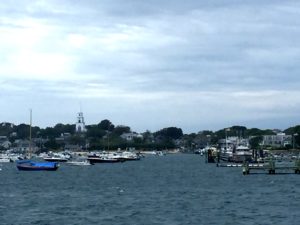
Back to the old, really old, people. If you are at all like me, you know a little something about each one of your four grandparents…but not a whole lot. Perhaps you actually spent time with them all (my mother barely knew her own father, so I definitely missed him entirely) or maybe just one or two of the foursome. In any case, each one can be considered the most accessible link to a history going back, back, and father back. And if you’re fortunate enough to have a relative — or, as in my case, a cousin’s husband – who has spent hours on genealogy, then it’s something like getting a flashlight that illuminates a long line of faces you, frankly, had learned to live without.
Our grandmother Mary Titus Shotwell Ingraham, who died 35 years ago, might just as well have been boarding the ferry from Hyannis with us, last week, for we went in search of her mother’s original people. Her mother’s name, before marriage, was Alice Wyman Gardner. My own father’s middle name was Gardner, so I’m pretty convinced of the connection.
“Gwy” as we called her — was a proud Quaker, and although my cousin had fifteen more years with her than I did, I vividly recall holding onto her wrinkled arm and attending Westbury Meeting a number of times, near our Long Island home. In those days, it didn’t occur to me to wonder how she got to be Quaker in the first place, but it turns out that this particular story started in the 17th century, on Nantucket.
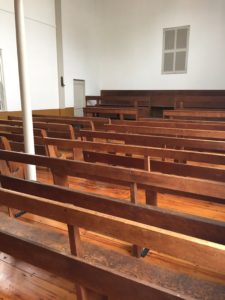
In a nutshell: my cousin and her husband discovered that all of us are descended from the original ten (white) families who settled the island. Members of the Wampanoag tribe were absolutely there first. Here’s in part where my internal seas begin to get stirred up. How, you also might ask, can we be related to all TEN families? Why, intermarriage, of course. It wasn’t exactly as if they could meet thousands of people on Tinder back then; they couldn’t be too choosy, either.
A couple of miles outside of town, near a pond but way off the road, there’s a place called the “Founders Burial Ground.” We hiked out there one day to find a pair of monuments we’d heard about. The older one, erected in 1881, lists all the names (with birth and death years, mostly within the 17th century) of the ten original MALE founders. I’ll spell them out because maybe you’re related to some of these guys too: Tristram Coffin; Thomas Macy; Edward Starbuck; Peter Folger; John Gardner; John Swain, Jr; John Coleman; Richard Gardner: Christopher Hussey; William Bunker. Sound familiar? it’s hard to see the names in the picture, but here goes anyway:
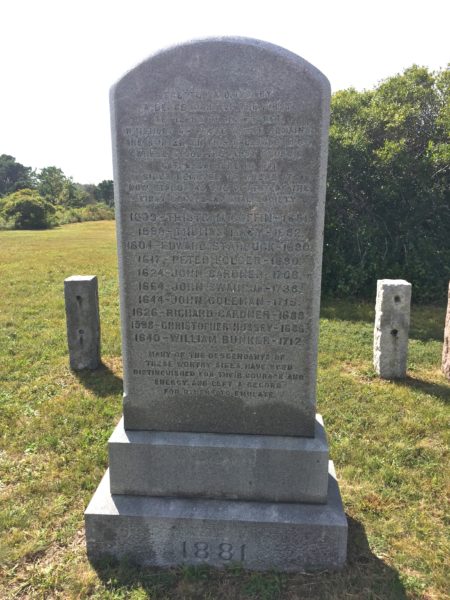
Having not done the research myself, I have no idea what any of these gentlemen were really like, apart from the fact that they produced a lot of children (the stone calls them “worthy sires”) who became successful businessmen. But I do know from a book I picked up, Quaker Nantucket (by Robert J. Leach and Peter Gow; Mill Hill Press, Nantucket; 1997) that Thomas Macy fled with his wife Sarah to Nantucket in 1659 after being persecuted by the Puritans –oh, they could be nasty– for sheltering Quakers, then a loathed sect. Presumably, in a new place, all these families could become as Quaker as they wanted, which they did.
This “male” monument was joined by another, thanks to a fundraising campaign, in 2009. The new one, appropriately, commemorates the women, from those original ten families. If you look carefully, you can see their names here:
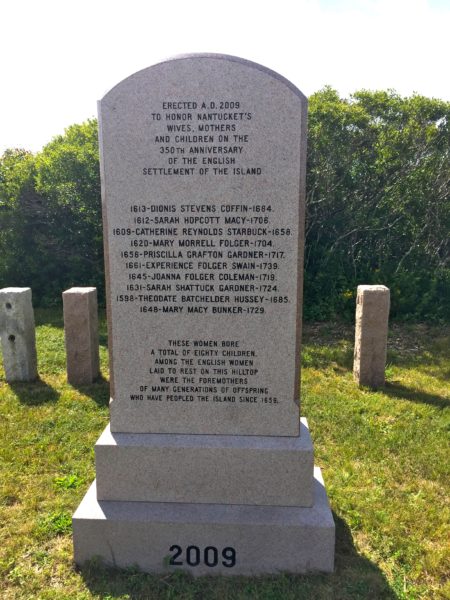
We now know to be alert for the “Whoops, you forgot the women!” moment when considering any society. In this little one long ago, it is crystal clear how far-ranging the female responsibilities were. Leach and Gow say this:
The wives, daughters and sisters of Nantucket were entrusted not only with household management but also with a major role in the direction of island life as a whole. (p. 23)
This was so, getting us into a whole new topic causing more turbulence, because the men of the island were essentially gone, busy building a whaling empire that coincided exactly with the rapid rise of Quakerism on the island during the 18th century. By the middle of the 19th century, with the discovery of petroleum, it all came crashing down, and the New Great Thing became the Gold Rush in California. Thank goodness at least some whales eluded those harpoons.
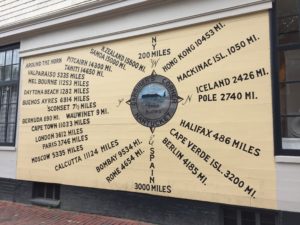
So, wait a minute, those quiet pacifists were also whale-killers who circled the globe to get rich?! And they had indentured servants, almost slaves, on board during their multi-year journeys? Just like Herman Melville described? Terrific.
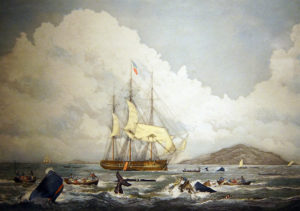
When we visited the Whaling Museum in town, we saw a wonderful documentary film by Ric Burns called Nantucket that brought elements of this history alive. In one particular segment, the narrator tries to make a link between the business acumen of the Quakers and the “sense of destiny” they had about whaling. This part went too quickly for me to absorb; it seemed glossed over, almost as if the makers of the film knew they couldn’t quite explain it.
But that’s the way with history, I guess. The more you learn, the more you get wondering. And when it hits really close to home—slam bang in your own family—then you can have a real whale of a time trying to sort it all out.
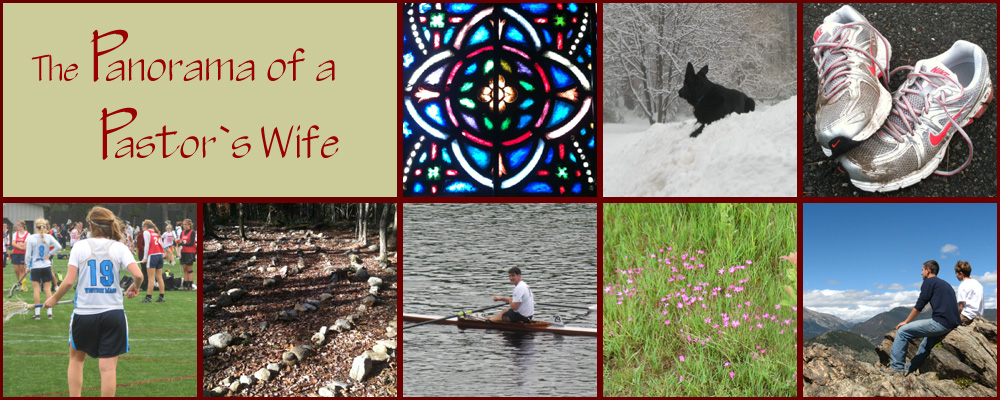
Heidi H. Frantz-Dale
Very interesting to read your today’s post!
And I will be very interested to discover who else (besides me and Peter Coffin+ of Keene) on your list are part of this “esteemed” kinship circle. I hope you’ll share 🙂
It happens that I, too, have just been doing some delving … though not genealogical … having, in the course of moving, unearthed a box of books that my great aunt (Marjorie Hallett Swain) left to me. My great-grandfather was born in a handsome house on Fair St called Moor’s End, the one enclosed by the serpentine brick wall (if you know the neighborhood). I could never quite align that with Quaker simplicity, but no one asked me too! Hallett, Barrett, Mitchell, Coffin, and Starbuck are all forebears. My direct link to Maria Mitchell (Vassar prof and 1st woman astronomer) has always been the strongest important personality among the women in in my family, for obvious reasons. She never had children and was never married but I have a direct line to her mother. A full biography,including her astronomy research, is among the books I unearthed in the book box. Our son Christ has been reading Quaker Nantucket with a fine-toothed comb, and his interest has led us to plan a venture on the island in early October.
My mother, sister, and I (I grew up in Woods Hole) used to go over to visit my great aunt for the last 10 days of the summer every year, but since she died in 1983 we’ve only made it over a few times … and as a Woods Holer, who wants to have to drive to Hyannis to get to Nantucket? (The boats used to go from WH.) She had a house at 15 Orange St, and a boathouse on what was then Commercial Wharf (now Swain’s Wharf) which was a sweet, tiny spot, built as a fisherman’s bachelor pad, where we spent out days jumping in and out of the harbor and basking on the deck, and taking annual jaunts to alder rock, skinny-dipping at Eel Point (before there were so many jeeps that the practice was deemed inappropriate), and getting corn from the Old Mill, for which in later years. my mother’s cousin Dick Swain was the miller.
All that means that I grew up with a lot of Nantucket exposure …. but it was girlhood exposure, and, like you, I’ve been asking a lot of questions about these staunch, ethical Quaker ship-owner ancestors (John Wendell Barrett), trying to sleuth out the stories behind the stories. At least in my case, I get the impression that many of them jumped ship and joined the Unitarians. Most recently, my uncle relayed to me the information that, while (at least from the white perspective) relationships with the Native Wamponoags were amicable and it was from them that our forebears learned the basics of whaling, the Native population was fiercely susceptible to the germs accidentally introduced by the newcomers.
So it might be fun to compare notes.
Fondly, Cousin Heidi (Hallett)
Polly
Hi Ann…Really, driving dangerously? Glad I wasn’t in the car for that! We drove calmly to the A & P and to visit family. What I most recall is her Plymouth Fury, with all the buttons to push on the left side. Will email you the other info, and he’ll be glad to hear from you.
Jacqueline McKenna
Pol – over the past couple of years I have slowly begun to learn that each of the religions have so many facets. I would never expect a Quaker to have slaves. Nor would I expect Buddhist Monks to have private back rooms in the monasteries that are filled with terribly violent paintings, flayed human skin and statues of their religious figures with male figures raping female ones. That contrast that we saw in China shook me to the core as I always thought of the Buddhist monks as peaceful, chanting and studying. And hearing about the Quakers with slaves sends chills up my spine as again, I have always considered Quakers as peace loving, equal opportunity, community supportive people. Life is very complicated! I loved reading this piece on your family research. Those thees and thou’s live on today. Love, Jacquie
Polly
Thanks, Jac…The apparent contradictions do abound! Just when we think we’ve got a good profile of a group, then comes new information to throw us off, or something. But for sure the Quakers have done a whole lot of good through the generations. What you saw in China– wow, yes, must have been disturbing.
Martha Aldrich Mitchell
Fabulous! Sometimes I stumble on one these through Face Book. Tristan Coffin showed up through a female in my aunt’s early work! A Californian by birth, she was very proud of her Yankee connections, Aldrich and Chase. Her work was done the old way. Proof, not so easy. I found through her work that a young couple heading to Illinois gave a manumission paper to an accompaniing slave. It was through a query from the wife of one of his descendents, now doctors and professors ! So many reactions to my soul. The youngest son of my travelling couple ended up in CA as a 49er! Sold his mine, bought thousands of acres in northern CA to raise sheep! Who knew, when my daughter at 14 bought her first sheep in Acton, MA! Rentch Angle and his oldest daughter, Euphrasia Jane, my paternal grandmother, age eighteen, buried six children on the farm, all dead in one summer. My mother’s family came from out of the mists of tiny villages within five miles of Stonehenge, all servants of the rich and mighty, hard to trace. In three days my first great grand daughter celebrates her first birthday in LA! The wonder of it all!
Polly
Wow, what a wealth of information! Apparently that Tristan Coffin is a really important guy for people doing this tracing back in America. Personally, I can only go so far with all of this — gets so complicated.
Carol Sharick
Love this stuff! If you’re interested, I read an historical novel this summer called Caleb’s Crossing, about the settling of Martha’s Vineyard, which also happened due to religious persecution, and the story of a strong young white girl/woman who develops a secret friendship with a young Wampanoag boy/man. It’s a good look at the trials, tragedies and hardships the people of the era endured, as well as the evolution of the Christianization of the tribe, and the formal education the young natives received at Harvard. It’s a good read. Thanks for sharing your journey to Nantucket!
Polly
Thanks so much, Carol! Hmm…I have definitely heard of this novel and may have read it some years back. Will check it out again, definitely. Funny, the whole Nantucket/Martha’s Vineyard pairing. I’ve still never been to that island but hope to remedy that soon.
Ann Grady
Polly,
How intriguing. I remember Aunt Mary (Gwy) as driving like a bat out of Hell and the “thees” and “thous” that were a part of her vocabulary. Could you send me the email address for the cousin of ours who did the Ingraham genealogy. He sent me a copy when I was in Vermont but that computer bit the dust.
Polly
Hi Ann–Really, driving dangerously? Glad I wasn’t in the car for that. We drove calmly to the A & P and to visit family in the Plymouth Fury, with all the buttons to push on the left side. Will email you the address…he’ll be glad to hear from you.